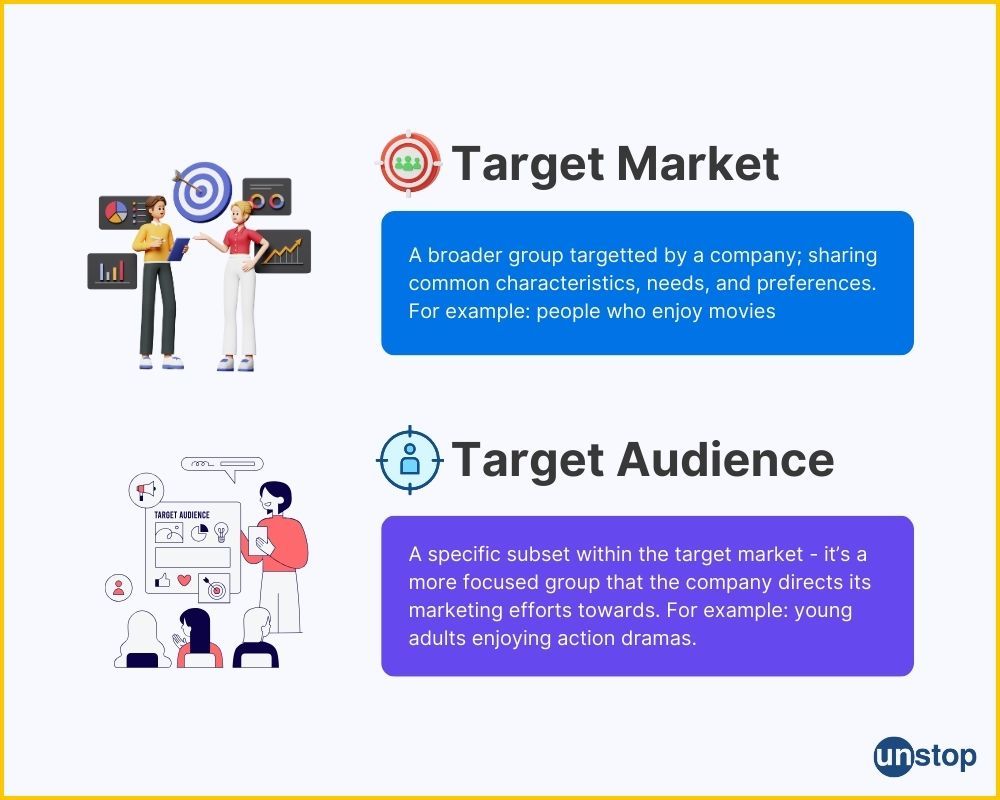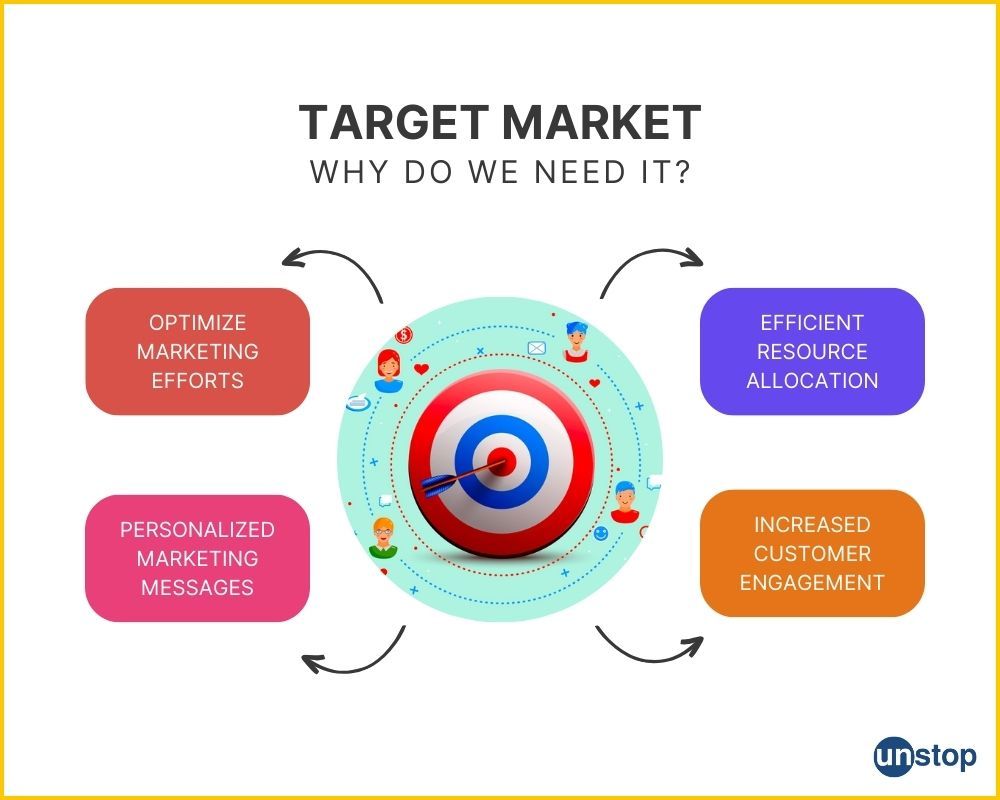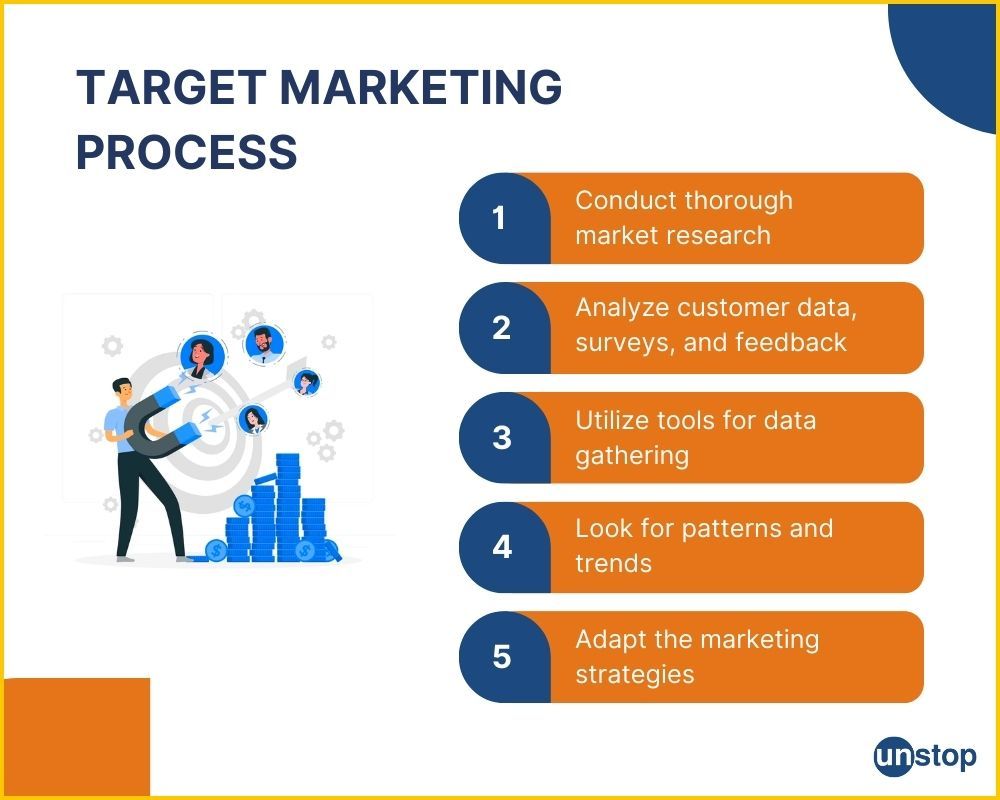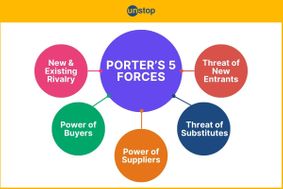- What is a Brand & Why is it Important?
- Elements of a Brand: Mission, Vision, and Values
- Types of Brands and their Significance
- Branding Strategies: Private, Multiproduct, and Mixed
- Brand Image and Its Impact on Perception
- Building a Strong Brand
- Frequently Asked Questions
- Understanding Brand Equity: Definition and Elements
- Importance of Brand Equity
- Evolution Of Brand Equity In The Digital Age
- Brand Equity in the Global Marketplace
- Measuring Brand Equity: Metrics & Methods
- Managing Brand Equity: Salient Elements
- Building & Managing Brand Equity: Best Practices
- The Future of Brand Equity
- Conclusion
- Frequently Asked Questions
- What is Brand Management?
- Importance of Brand Management
- Benefits of Effective Brand Management
- Principles of Brand Management
- Strategies for Successful Brand Management
- Brand Management vs. Marketing
- Conclusion: The Power of Brand Management
- Frequently Asked Questions
- Importance of Brand Image in Marketing
- Key Elements of a Successful Brand Image
- Brand Image vs. Brand Identity: Key Differences
- Measuring and Monitoring Brand Image
- Strategies for Maintaining and Enhancing Brand Image
- The Power of a Positive Brand Image
- FAQs
- What is Brand Awareness and its Importance?
- Benefits of Brand Awareness
- Brand Awareness Strategy: Some Tried & Tested Methods
- Some Creative Ways to Boost Brand Awareness
- Significance of Brand Awareness
- Conclusion
- Frequently Asked Questions
- Porter's 5 Forces Model: What Is It?
- Porter's 5 Forces Model: How To Use It?
- Common Barriers to Entry
- Evaluating Suppliers' Negotiating Power
- Understanding the Bargaining Power of Buyers
- Analyzing Threat of Substitute Products or Services
- Rivalry amongst Competitors (Old & New)
- Drawbacks of the Five Forces Model
- Conclusion
- Frequently Asked Questions
- How Well Do You Know Porter’s 5 Forces? Take A Quiz!
- What is Buying Motive?
- Types Of Buying Motives
- Importance Of Buying Motives
- Six Universal Buying Motives
- Identifying Buyer's Motives
- Utilizing Buying Motives In Sales
- Challenges In Interpreting Buying Motives
- Frequently Asked Questions (FAQs)
- 💸 Think You Know Buying Motives? Take A Quiz!
- Understanding the Elements and Importance of Brand Equity
- What are brand equity models?
- Comparing Keller's and Aaker's brand equity models
- Real-world examples of brand equity in action
- Strategies for building strong brand equity
- Key takeaways on brand equity models
- FAQs
- Mastered Brand Equity Models? Prove It!
- What Is Brand Positioning?
- The Importance of Brand Positioning for Businesses
- Creating A Brand Positioning Strategy: Step-By-Step Process
- Measuring the Success of Your Brand's Positioning
- Examples of Strong Brand Positioning in the Market
- Types of Brand Positioning Strategies
- Social Media Engagement: A Key Positioning Strategy
- What Makes a Good Brand Positioning Strategy?
- Conclusion
- Frequently Asked Questions
- Quick Quiz to Test Your Knowledge of Brand Positioning!
- Brand Personality: Definition & Importance
- How to Define Your Brand Personality?
- Choosing Your Brand Personality Attributes
- Dimensions of Brand Personality Framework: The Aaker Model
- Incorporating Core Values Into Your Brand Personality
- Examples of Brand Personalities in Action
- Conclusion
- Frequently Asked Questions
- Brand Personality Quiz– Let's Go!
- What is Brand Identity?
- What are the Key Components of Brand Identity?
- Importance & Benefits Of Brand Identity
- Importance of Unique Visual Elements in Brand Identity
- Communication Style and Tone of Voice in Brand Identity
- Steps on How to Create a Brand Identity
- Brand Identity Example- Coca-Cola
- Examples of Strong Brand Identities in Different Industries
- Consistency in Online and Offline Branding
- Conclusion
- Frequently Asked Questions (FAQs)
- Think You Know Brand Identity? Take A Quiz!
- Brand Identity Prism: Understanding The Concept
- Role Of Culture In Brand Identity Prism
- Brand Identity Prism: Visualizing The Sender & Receiver
- Benefits Of Brand Identity Prism
- Examples Of Brand Identity Prism In Action
- Brand Identity Prism: Key Takeaways
- Frequently Asked Questions
- Take This Brand Identity Prism Quiz!
- What is Market Segmentation?
- Importance of Market Segmentation
- The Market Segmentation Process
- Types of Market Segmentation
- Common Challenges in Implementing Market Segmentation
- Overcoming Challenges in Market Segmentation
- Conclusion: Understanding The Impact
- Frequently Asked Questions (FAQs)
- Test Your Market Segmentation Knowledge– Take This Quiz!
- What is Brand Loyalty? Meaning & Significance
- Characteristics of Brand Loyalty
- Measuring and Tracking Brand Loyalty
- Importance of Brand Loyalty for Companies
- Brand Loyalty Examples and Types
- Strategies for Building Brand Loyalty
- Differentiating Brand Loyalty from Customer Loyalty
- Conclusion: The Power and Importance of Brand Loyalty
- Frequently Asked Questions
- Think You Know Brand Loyalty? Take A Quiz!
- Brand Extension Meaning
- Brand Extension Types
- Understanding Brand Line Extension vs. Brand Extension
- The Impact and Potential of Brand Extension
- Successful and Unsuccessful Brand Extensions Examples
- Summing Up
- Frequently Asked Questions
- Quiz– Test Your Brand Extension!
- Step-by-step guide on how to build a brand from scratch
- Benefits of a Strong Brand
- Examining Successful Brand-Building Examples
- Summing up
- Frequently Asked Questions
- Know How to Build a Brand? Prove it With This Quiz!
- What is Marketing Mix?
- Understanding the 4 Ps of Marketing
- The Seven Ps of Marketing
- Implementing the Marketing Mix in Business
- Amul: Example of Successful Marketing Mix Implementation
- Exploring Alternative Marketing Mix Models
- Conclusion
- Frequently Asked Questions (FAQs)
- Mastered the Marketing Mix! Test Your Knowledge Now
- Defining Brand Value and its Importance
- Measuring Brand Value
- Factors that Make a Brand Valuable to Customers
- Examples of Brand Value from Real World
- Brand Value Versus Brand Equity
- The Impact of Brand Value on Business Marketing Strategies
- Conclusion: The Significance of Brand Value
- Frequently Asked Questions
- How Much Do You Know About Brand Value? Take This Quiz!
- Definition Of Co-Branding
- Different Types Of Co-Branding
- Benefits & Advantages Of Co-Branding
- Strategies For Successful Co-Branding Partnerships
- Notable Successful Co-Branding Examples
- Factors Influencing Co-Branding Success
- Frequently Asked Questions (FAQs)
- Co-Branding Quiz: Test Your Expertise!
- What is a Target Market?
- Importance of Target Market: Why Do We Need It?
- Types of Target Market
- The Target Marketing Process
- Primary Research for Target Markets
- Leveraging Target Market Segmentation for Sales
- Conclusion
- Frequently Asked Questions (FAQs)
- 🎯 Do You Know Your Target Market? Take the Quiz!
- Importance of Understanding Consumer Decisions
- Traditional vs Contemporary Consumer Behaviour Model
- Traditional Models of Consumer Behaviour
- Learning Model of Consumer Behaviour
- Psychoanalytical Model of Consumer Behaviour
- Sociological Model of Consumer Behaviour
- Economic Model of Consumer Behaviour
- Contemporary Models of Consumer Behaviour
- EKB Model of Consumer Behaviour
- Black Box Model of Consumer Behaviour (Stimulus-Response Consumer Behaviour Model)
- Howard Sheth Model of Consumer Behaviour
- Hawkins-Stern Model of Consumer Behavior
- Webster and Wind Model
- Nicosia Model of Consumer Behaviour
- How to Select a Consumer Behaviour Model?
- Final Remarks
- Frequently Asked Questions
- 🛍️ Consumer Behavior Models Quiz: Test Your Knowledge!
- What is a Consumer?: Definition & Role
- The Evolution of the Term "Consumer"
- Consumer Behavior
- Different Types of Consumers
- Consumers' Motivation for Buying
- Relationship Between Businesses and Consumers
- Consumer Rights in India
- Current Challenges for Consumers
- The Future of Consumers in a Digital Age
- Final Remarks
- Frequently Asked Questions (FAQs)
- 🛍️ Consumer or Customer? Test Your Knowledge!
- What is a Market Structure?
- Types of Market Structures
- How Markets Work
- Significance of Different Types of Market
- Summing Up
- Frequently Asked Questions
- 🏪 Market Structures 101: Take the Quiz!
- Understanding the Concept of Corporate Branding
- Importance and Advantages of Corporate Branding
- Researching Competitor Brands
- Implementing Effective Corporate Branding Strategies
- Successful Corporate Branding Examples: Alphabet, Walmart & SAP
- Impact and Success of Corporate Branding
- Conclusion
- Frequently Asked Questions
- 🏢 Corporate Branding Quiz: Test Your Knowledge!
- Perception Management: Meaning & Importance
- Process Of Perception Management
- Influencing & Shaping Perceptions
- Strategies For Perception Management
- Technology In Perception Management
- Branding & Control In Perception Management
- Customer Feedback For Perception Improvement
- Frequently Asked Questions (FAQs)
- 🧠 Perception Management Quiz: How Well Do You Know It?
- Definition & Importance Of Target Marketing
- Advantages & Disadvantages Of Target Marketing Strategies
- Examples Of Target Marketing Strategies
- Creating An Effective Target Market Strategy
- Segmentation: Key To Targeted Marketing
- Utilizing Social Media For Targeted Marketing
- Frequently Asked Questions ( FAQs)
- 🎯 Target Marketing Strategies Quiz: Test Your Knowledge!
- Definition and Significance of Brand Association
- Brand Association Types
- Successful Brand Association Examples
- Strategies for Building Strong Brand Associations
- Overcoming Negative Brand Associations
- Conclusion: Harnessing the Power of Brand Association
- Frequently Asked Questions
- 🔗 Brand Association Quiz: Check Your Brand Knowledge!
- What is Product Positioning?
- Importance Of Product Positioning in Marketing
- Difference between Product Positioning and Brand Positioning
- Types Of Product Positioning
- Main Components Of Product Positioning
- Successful Product Positioning Strategies
- Understanding the Product Positioning Process
- Examples Of Effective Product Positioning
- Conclusion
- Frequently Asked Questions (FAQs)
- 🔥 Product Positioning Quiz: Test Your Marketing Smarts!
- How do we define niche market?
- Strategies To Find Your Niche Market
- 7 Examples Of Niche Markets
- Benefits Of Targeting A Niche Market
- Testing Your Product Or Service For Niche Market
- Conclusion
- Niche Market: Frequently Asked Questions (FAQs)
- 🎯 Niche Market Quiz: Test Your Knowledge!
- Importance Of STP In Marketing
- Understanding STP in Marketing Step-by-Step
- Process Of Implementing STP In Marketing
- Examples Of Successful STP Strategies
- Conducting An STP Marketing Analysis
- Choosing Your Marketing Mix
- Strategies For Targeting the Right Audience
- Conclusion
- Frequently Asked Questions (FAQs)
- 🔍 STP in Marketing Quiz: Test Your Knowledge!
- Sales and Marketing: Understanding the Core Concepts
- Key Differences Between Sales and Marketing
- Types of Marketing
- Types of Sales
- Power of Synergy: Sales and Marketing Alignment (Smarketing)
- Frequently Asked Questions (FAQs)
- Definition Of Customer Satisfaction
- Importance Of Customer Satisfaction
- Strategies For Effective Customer Satisfaction
- Measuring Customer Satisfaction
- Customer Satisfaction in Marketing & Sales
- Frequently Asked Questions (FAQs)
- 🎯 Customer Satisfaction Quiz: Are You an Expert?
- Customer Delight Meaning
- Benefits of Customer Delight
- Customer Satisfaction Vs Customer Delight
- Strategies With Customer Delight Examples
- How to Measuring the Impact Of Customer Delight?
- Customer Delight Examples - 3 instances by big brands that won hearts
- Common Mistakes In Customer Delight
- Conclusion
- Frequently Asked Questions (FAQs)
- 🌟 Customer Delight Quiz: Can You Ace It?
- What is a Marketing Plan?
- Types Of Marketing Plan
- What are the Key Components of a Marketing Plan?
- Steps for Effective Marketing Planning
- Crafting Your SEO Content Strategy
- Budgeting & Resource Allocation
- Identifying & Analyzing Competition
- Measuring Success with KPIs
- Importance of Flexibility in Marketing Planning
- Challenges of Marketing Plan
- Marketing Plan vs Business Plan
- Conclusion
- Frequently Asked Questions (FAQs)
- 📊 Marketing Planning Quiz: Test Your Knowledge!
- What is Marketing Control?
- Types of Marketing Control (with Examples)
- Annual Plan Marketing Control
- Profitability Marketing Control
- Efficiency Marketing Control
- Strategic Marketing Control
- Process of Marketing Control
- Techniques Used in Marketing Control
- Frequently Asked Questions
Target Market: What Is It & How To Define It?

Companies often have a specific group of people in mind when they create and promote their products. They focus on understanding the needs and preferences of this group to deliver the best possible experience. For instance, a fitness brand might design workout gear that specifically caters to athletes and fitness enthusiasts.
The target market is the group of people that a company focuses on when developing its products and services.
Let’s understand the concept in detail.
What is a Target Market?
In business, a target market refers to a specific group of consumers. Marketing strategies should be developed with a knowledge of and understanding of a business's target market. To better cater to customer demands, businesses need to focus on tailoring their products and services to the needs of their target customers.
Target market segmentation involves dividing the larger market into smaller, more specific segments based on characteristics such as demographics, psychographics, and behavior. Understanding the target market helps businesses connect with potential customers who are most likely to be interested in their offerings. It's the first step in building a loyal customer base.
Target Market Example
A local bakery specializes in gluten-free and vegan baked goods, catering to customers with dietary restrictions or preferences for plant-based products. This bakery's target market includes individuals with gluten sensitivities or celiac disease, vegans, and health-conscious consumers looking for delicious alternatives to traditional baked items.
By focusing on this niche, the bakery effectively addresses the specific needs and preferences of its target audience, creating a loyal customer base that appreciates the specialized offerings.
Target Market vs Target Audience
The target market and target audience are two distinct concepts in marketing. While they are related, they have different meanings and purposes.

The target market refers to a broader group of individuals or businesses that a company aims to reach with its products or services. It is a larger segment of the population that shares common characteristics, needs, and preferences. For example, a company that sells movie tickets may define its target market as individuals who enjoy watching movies. These individuals may have a passion for film and regularly visit theaters or stream movies at home.
The target audience is a subset within the target market. It consists of the individuals or businesses that are most likely to be interested in and purchase a particular product or service. The target audience is a more focused group that the company directs its marketing efforts towards. Using the same example, the target audience for a movie may be young adults who are fans of action films or movie enthusiasts who enjoy independent films.
The target market represents the overall group of potential customers. The target audience is a narrower segment within that market that the company specifically targets with its marketing strategies.
Importance of Target Market: Why Do We Need It?

The most obvious benefit of having a target market is finding a ready group of people interested in your product. One may question the need to focus on only one group of the population. But, it’s impossible to develop a product that everyone desires! Thus, focusing on one group is ideal. Moreover, it helps align all efforts, from product development to marketing, towards one common goal.
Here are the other benefits of having a target market:
Optimizing Marketing Efforts
When businesses define their target market, they can optimize their marketing efforts and increase return on investment (ROI). Instead of wasting time and money on broad marketing campaigns that may not reach the right audience, businesses can concentrate their resources on reaching the people who are most likely to convert into paying customers.
Personalized Marketing Messages
Defining a target market enables businesses to create personalized marketing messages. This helps them directly address potential customers and highlight their needs and interests in marketing communications. By understanding the characteristics, preferences, and pain points of their target audience, businesses can develop compelling content that resonates with them. This personalization helps build trust and credibility, increasing the likelihood of conversion.
Efficient Resource Allocation
By defining a target market, businesses can allocate their resources more efficiently. They can identify which advertising channels, platforms, or mediums are most effective in reaching their target audience. Thus, they can make informed decisions about where to invest their time, energy, and budget for maximum impact.
Increased Customer Engagement
Targeting a specific audience helps businesses foster deeper connections and engagement with potential customers. When companies understand who they are speaking to and what matters most to them, they can create meaningful interactions that grab attention and drive action. This targeted approach increases the chances of building long-term relationships with loyal customers and improving overall customer satisfaction.
Types of Target Market
Target markets play a crucial role in shaping a business's marketing strategy. They can be categorized based on demographics, psychographics, behavior, or geographic location. Let's explore some examples of different target markets:
Demographics
- Millennials interested in sustainable fashion: This specific group values eco-friendly and ethically produced clothing.
- Parents looking for educational toys for toddlers: These parents prioritize educational value when choosing toys for their young children.
Psychographics
- Sports enthusiasts seeking high-performance gear: This group is passionate about sports and wants top-notch equipment to enhance performance.
- Health-conscious individuals interested in organic food: These consumers prioritize natural and healthy food options.
Behavior
- Budget travelers searching for affordable accommodation: This group seeks cost-effective lodging options while traveling.
- Tech-savvy individuals who prefer online shopping: These consumers enjoy the convenience and ease of purchasing products online.
Geographic Location
- Local residents interested in a nearby gym: This market segment prefers fitness facilities within proximity to their homes.
- Tourists visiting a coastal town looking for beachwear: These visitors are specifically interested in purchasing swimwear and beach accessories during their vacation.
It's important to note that businesses may have multiple target markets depending on the range of products or services they offer. For example, a company selling both athletic apparel and formal wear may have different target markets for each category. By understanding the characteristics, preferences, and needs of these various target markets, businesses can effectively reach and engage with their intended audience through tailored marketing efforts.
The Target Marketing Process

To effectively reach your customers and tailor your marketing efforts, it is crucial to identify and analyze your target market. The target market selection involves conducting thorough market research and analyzing customer data, surveys, and feedback.
Conduct Thorough Market Research
Market research includes gathering information about consumer preferences, behaviors, demographics, and psychographics. This helps companies understand their potential customers and they can design marketing campaigns that resonate with them.
Analyze Customer Data, Surveys, and Feedback
Analyzing customer data is a valuable way to gain insights into your target market. Look at purchase history, browsing behavior, and engagement metrics to understand what drives their decision-making process. Surveys and feedback can provide direct insights into their needs, pain points, and preferences.
Utilize Tools for Data Gathering
Utilize tools like Google Analytics or social media analytics to gather data about website visitors or followers. This data can be used to gather information on user demographics, interests, engagement levels, and more. By leveraging these insights effectively, you can refine your target market analysis continuously.
Look for Patterns and Trends
When analyzing your target market data, look for patterns and trends that emerge. The common characteristics among loyal customers will help you narrow down specific segments within your broader target audience.
Adapt Your Marketing Strategies
After identifying your target market, adapt your target marketing strategies. Develop customized messaging that directly addresses the needs of this specific audience segment. Consider their preferences when choosing channels for promotion or developing new products/services.
Identifying and analyzing your target market allows you to focus on the right customers with relevant messaging that resonates with them. By understanding their needs deeply through comprehensive research analysis of customer data & feedback while utilizing effective tools like Google Analytics, you can refine your marketing strategies and increase the chances of success.
Primary Research for Target Markets
Primary research is a valuable tool for businesses to gain in-depth insights into their target market. By collecting firsthand information directly from the source, businesses can better understand customer attitudes, motivations, and buying habits. This helps them gain a competitive edge by addressing customer pain points and desires more effectively.
How to Conduct Primary Research?
One way to conduct primary research is through surveys (online or in-person). These questionnaires allow businesses to gather data on various aspects of their target market, such as demographics (age, gender, education level) and geographic location.
Another method is conducting interviews. This involves one-on-one conversations with individuals from the target market to understand customers' thoughts and experiences. This helps in gaining valuable psychographic data.
Focus groups are yet another option for primary research. These involve bringing together a small group of individuals who represent the target market. Through guided discussions and activities, businesses can uncover shared perspectives and preferences.
Benefits of Primary Research
Primary research offers several advantages over secondary research (using existing data). It provides specific insights tailored to a business's unique needs and goals. By engaging directly with customers, businesses can obtain accurate and up-to-date information that may not be available elsewhere.
Furthermore, primary research allows for customization. Businesses can design surveys or interview questions that address their specific areas of interest or concern. This flexibility ensures that the collected data is relevant and actionable.
Putting Primary Research to Work
Once primary research has been conducted, businesses can analyze the gathered information to inform their marketing strategies and decision-making processes. They can identify trends within their target market, refine product offerings based on customer feedback, or tailor advertising messages to resonate with specific segments.
Leveraging Target Market Segmentation for Sales
Target market segmentation is a strategy that involves dividing the overall consumer base into smaller groups based on shared characteristics or behaviors. This segmentation allows sales teams to personalize their sales pitches and improve conversion rates.
Personalized Sales Pitches
By tailoring their messaging according to the different needs of each segment, sales teams can build stronger relationships with potential customers. This means understanding the demographics, geography, psychographics, and behaviors of each segment.
Improved Conversion Rates
Segmenting the target market allows sales teams to create differentiated marketing strategies that resonate with each specific segment. By addressing their pain points through customized solutions, conversion rates can be significantly improved.
In conclusion, identifying and analyzing your target market enables you to create targeted marketing campaigns, improve customer engagement, and increase sales.
Conclusion
In summary, understanding your target market is foundational to the success of any business strategy. By identifying and analyzing the specific demographics, interests, and behaviors of your target audience, businesses can tailor their products, marketing efforts, and services to meet the unique needs and preferences of their customers.
This not only enhances customer satisfaction and loyalty but also increases the efficiency of marketing budgets and ultimately drives sales and growth. As markets and consumer behaviors evolve, it remains crucial for businesses to continuously revisit and refine their target market strategies to stay competitive and relevant in the ever-changing business landscape.
Frequently Asked Questions (FAQs)
1. What are some common methods for identifying a target market?
There are several methods for identifying a target market. Some common approaches include conducting market research through surveys or focus groups; analyzing existing customer data; studying industry trends and competitors; and using demographic or psychographic segmentation techniques.
2. How do I analyze my target market?
Analyzing your target market involves gathering data about their characteristics, preferences, behaviors, and needs. You can use various tools like surveys or analytics software to collect information. Once you have the data, analyze it to identify patterns or trends that can help you understand your audience better.
3. Can I have multiple target markets?
Yes! It's possible to have multiple target markets if your product or service appeals to different groups of people with distinct needs or preferences. However, it's important to ensure that each segment is well-defined and that you have appropriate marketing strategies in place for each one.
4. How often should I review my target market strategy?
It's recommended to review your target market strategy periodically or whenever there are significant changes in your industry, customer behavior, or market conditions. Regularly reassessing your target market strategy ensures that you stay aligned with the evolving needs of your audience.
5. What are the benefits of leveraging target market segmentation for sales teams?
Leveraging target market segmentation offers several advantages for sales teams. It enables them to personalize their approach and deliver tailored messages to specific customer segments, increasing the chances of connecting with potential customers on a deeper level and closing more sales.
🎯 Do You Know Your Target Market? Take the Quiz!
You may also be interested in the following:
- Marketing Mix: Discover The 4 Ps Of Marketing & Their Importance
- Building A Brand: The Ultimate Checklist For New Entrepreneurs
- Brand Extension: Meaning, Types, Examples And Benefits
- Market Segmentation: What It Is & How Does It Drive Growth?
- Retail Marketing: Types, Strategies And Examples Of Successful Market Players!
Alekhya Chakrabarty is a father, a doodler, a trivia buff, a sports fanatic and a lifelong student of marketing. Alekhya is the VP of Marketing & Growth at Unstop, the engagement and hiring platform which connects students and graduates with opportunities. He has over a decade and a half of experience in driving revenue and building brands with the likes of Nestle, HUL and ITC. He is an alumnus of IMT Ghaziabad and in his last stint he was leading the marketing function at Sunstone, a higher education startup. Alekhya has been recognised as a ‘Top Voice’ on LinkedIn for Digital Marketing & Brand Management. He runs a marketing podcast titled East India Marketing Company to drive conversations around growth, content, culture and commerce.
Login to continue reading
And access exclusive content, personalized recommendations, and career-boosting opportunities.
Subscribe
to our newsletter
















Comments
Add comment